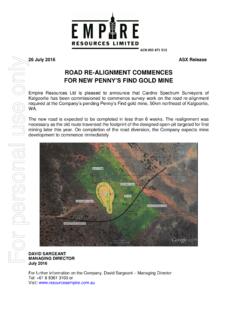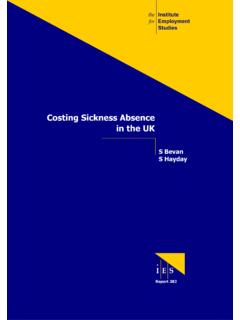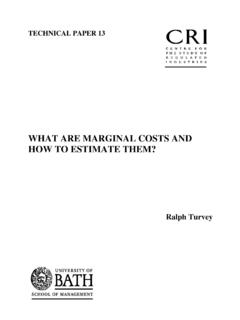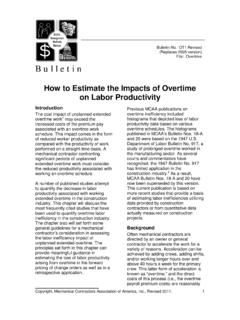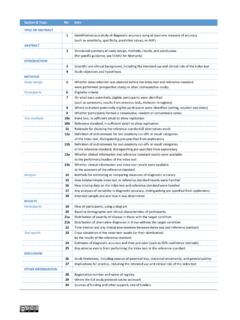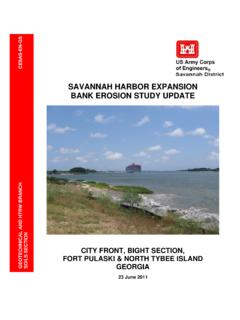Transcription of PENNY’S FIND GOLD MINE NEW UNDERGROUND …
1 1 ACN 092 471 513 13 December 2017 ASX Release PENNY S FIND GOLD MINE NEW UNDERGROUND resource ESTIMATE Highlights: New UNDERGROUND resource estimate for Empire s Penny s Find open-pit gold mine near Kalgoorlie, WA Comprises 248,000 tonnes @ Au for 56,000oz Final feasibility study for UNDERGROUND mining due end of March 2018 Mineralisation remains open at depth An inventory of 56,000 ounces of gold at robust grades has been announced by gold miner Empire Resources Ltd ( Empire , ASX code: ERL) under a new 2012 JORC compliant UNDERGROUND resource estimation for the Company s Penny s Find gold mine, 50 kilometres northeast of Kalgoorlie in Western Australia.
2 The new UNDERGROUND reportable mineral resource of 248,000 tonnes @ Au (Table 1) extends from the planned base of the current open pit operation (max. 85m depth) to at least 250m below surface and remains open at depth (Figure 1). This UNDERGROUND resource only reports fresh mineralisation and is defined by a Au lower cut-off wireframe model. It also reflects only those parts of the mine s total resource which have the potential to be economically viable for extraction by UNDERGROUND mining methods Table 1 : Penny s Find Gold Mine Reportable in situ Mineral resource below ultimate pit design Fresh mineralisation only Class Tonnes Au g/t Ounces Indicated 147,000 38,000 Inferred 101,000 18,000 TOTAL 248,000 56,000 2 Figure 1: Long Section (looking west) shows all blocks by classification.
3 Light Blue Indicated, Blue Inferred The new resource estimation was calculated by DataGeo Geological Consultants ( DataGeo ) and incorporates results from recent diamond drilling reported to the ASX on 6 November 2017. The data, interpretation and techniques utilised in the estimate of the mineral resource are summarised in Appendix 1. JORC 2012 tables pertinent to the resource estimation are shown in Appendix 2. The Penny s Find Joint Venture partners expect the current final UNDERGROUND feasibility study to be completed by end of first quarter, calendar 2018. Empire s Managing Director, Mr David Sargeant said: It is particularly pleasing to see a robust resource in terms of tonnes and grade existing beneath the currently operating open pit.
4 As the resource remains open at depth, further deeper drilling will be required from UNDERGROUND , assuming the final feasibility is positive . About Penny s Find Empire Resources Ltd holds 60% equity in the Penny s Find gold deposit with Brimstone Resources Ltd holding the remaining 40% equity in the project. High grade gold mineralization at Penny s Find is hosted by quartz veins at the contact between sediments and basalt. Metallurgical test work has shown fresh mineralization to be free milling with a high gravity recoverable gold component and a total gold recovery of >96%. The Penny s Find gold mine and deposit is situated on granted Mining Lease 27/156.
5 3 Figure 2 Location Penny s Find deposit DAVID SARGEANT MANAGING DIRECTOR For further information on the Company Phone: +61 8 9361 3100 Competent Person - Mineral resource Estimate The information is this release concerning the Mineral Resources for the Penny s Find Deposit have been estimated by Mr Peter Ball who is a director of DataGeo Geological Consultants and is a member of the Australasian Institute of Mining and Metallurgy (AusIMM). Mr Ball has sufficient experience which is relevant to the style of mineralization and type of deposit under consideration and qualifies as a Competent Person as defined in the 2012 Edition of the Australasian Code for Reporting of Exploration Results, Mineral Resources and Ore Reserves.
6 Mr Ball consents to the inclusion in this public release of the matters based on his information in the form and context in which it appears. 4 APPENDIX 1 - Summary of Penny s Find resource Reporting Criteria The data and interpretation utilised and the resultant mineral resource estimate for the Penny s Find Deposit is summarised as follows: - Geology and Mineralisation Interpretation o The deposit consists of a moderate to steeply north-easterly dipping north-west to south-east striking (relative to a GDA grid) sheared quartz/carbonate zone which is anomalous in gold. Within the shear in the fresh rock are zones of similarly orientated higher-grade with the largest zone occurring over a strike length of 180m, and extending for 220m down dip with a true width averaging These were interpreted on 20m spaced sections along strike.
7 The Deposit remains open at depth although appears to be thinning. o The mineralised zones are defined using a nominal Au boundary without a minimum length. These zones are wireframed as solids. o The weathering profile is positioned by the drill log information and represented by wireframed surfaces, including base of soil cover. o The main lithological units are interpreted on section and wireframed as solids Drill Information and Sampling o The deposit has been drilled from surface using RAB, reverse circulation (RC) and diamond coring. Only RC and diamond drilling from 2007 onwards has been used in this estimate.
8 A total of 54 RC and diamond holes containing 7,642m intersect the mineralisation. o The diamond core recovery is generally very good, averaging more than 95%. The RC sample recovery for the 2007 and 2012 drilling is erratic being described as good (thought to be >75% recovery) in dry conditions which is most of the time and within the mineralised zone to poor (thought to be < 25%) in wet conditions. For the 2015 drilling it averaged 84%. The recovery for the mineralised zone within the hole drilled in 2016 was in excess of 95%. o All hole collars were surveyed by DGPS and the orientation and inclination at collar is set out using compass and clinometer.
9 Down hole survey for the 2007 series holes was by down hole camera measuring dip only except for the last holes of the program where dip and azimuth were measured. The 2012 program was down hole surveyed by camera with dip only recorded. Diamond tails were surveyed by gyroscopic methods. For the 2015 drilling collars were positioned by tape and compass (from existing holes) or by handheld GPS. The inclined hole was orientated using compass, sighter pegs and clinometer. For the 2016 and 2017 holes the collars were pickup up by the site surveyor using a DGPS and the down hole orientation was measured with a Reflex Ezi-shot tool.
10 O The drilling and sample collection techniques for RC was that chips were collected at 1m intervals via the cyclone into sample bags with on most occasions a rotary or cone splitter used to collect a smaller sample at the same time. Samples for dispatch were either composites (individual samples speared and 4 consecutive samples were combined) or individual (the 1m rotary or cone split samples were sent initially if the material returned was obviously mineralised). If the 4m composites returned an assay above a threshold then the large samples were re-speared or the rotary splitter sample was taken and submitted individually.
